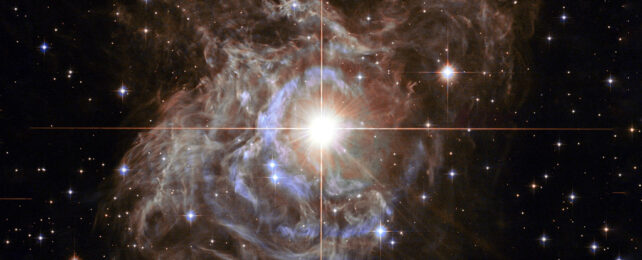
Some mysteries in science vanish with more accurate measurements, resolving gaps with a puff of new data. And sometimes, a second look simply reinforces the fact you have a mystery on your hands.
It's the latter in the case of a new study that challenges the Universe's most fundamental laws of physics.
The Hubble constant is an expression of the speed of Universe's expansion. Unfortunately, there's more than one solution for it, depending on how it's measured.
An expansion rate calculated using the faint glow left behind from the first light to ever exist, known as the cosmic microwave background, is around 68 kilometers per second/megaparsec. Looking at the way stars and galaxies are retreating from us today, it's more like 73 km/sec/Mpc.
These two sets of measurements clearly don't match. Not even close. But if we had some small detail wrong, such as the true distance of far-off objects as we calculate their flight into the distance, there might be a chance the two numbers might come closer to overlapping.
In this latest study, researchers from the Swiss Federal Institute of Technology Lausanne (EPFL) used data from the Gaia spacecraft to recalibrate the brightness of pulsating stars known as Cepheids.
By linking a known brightness with distance, and then looking for examples in the depths of space, we can accurately cobble together a scale for the cosmos. This calibration is the first rung of a 'cosmic ladder' that's used to calculate ever larger distances in space, and through that the rate at which the Universe is getting bigger.
The good news is that the improvements in accuracy helps us better figure out the Hubble constant.
Then there's the not-so-good news. The latest data confirm a Hubble constant or expansion rate of 73.0 ± 1.0 km/s/Mpc, bringing it no closer to meeting the alternative measure of 67.4 ± 0.5 km/s/Mpc.
That gap (the 'Hubble tension') of 5.6 km/s/Mpc remains a significant problem – something is wrong somewhere, and now we're even more certain of it than ever.
"The more confirmation we get that our calculations are accurate, the more we can conclude that the discrepancy means our understanding of the Universe is mistaken, that the Universe isn't quite as we thought," says EPFL astrophysicist Richard Anderson.
The way the new readings were taken, through the discovery of new Cepheid clusters and observations from multiple angles, plus cross-referencing with other clusters, can be used in many other calculations of light and distance in space, the researchers say.
In fact, it will even be useful in working out the geometry of the Milky Way as a whole: how the elements of our galaxy are positioned and how that relates to other galaxies further out from our home planet.
"The highly accurate calibration we developed will let us better determine the Milky Way's size and shape as a flat-disk galaxy and its distance from other galaxies, for example," says astrophysicist Mauricio Cruz Reyes, from the EPFL.
"Our work also confirmed the reliability of the Gaia data by comparing them with those taken from other telescopes."
The research has been published in Astronomy & Astrophysics.





No comments:
Post a Comment